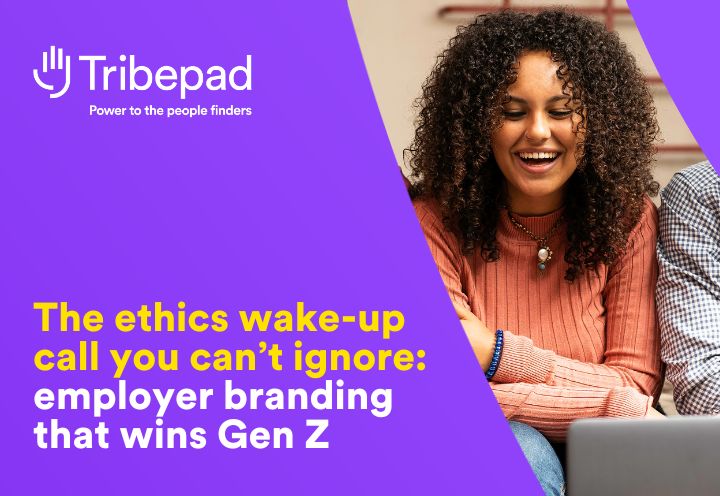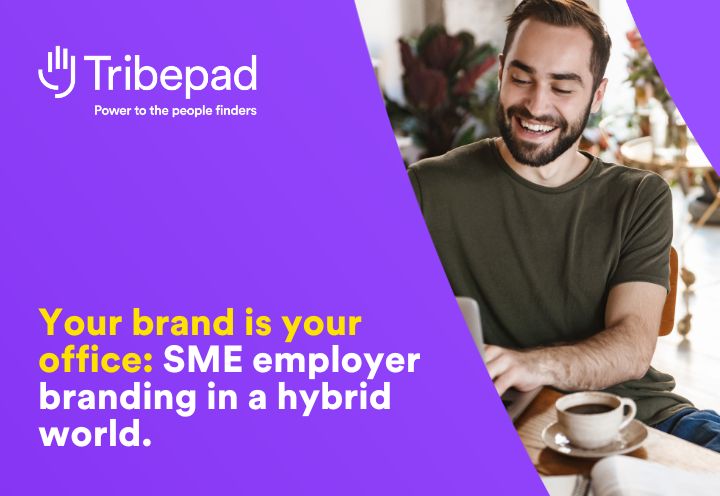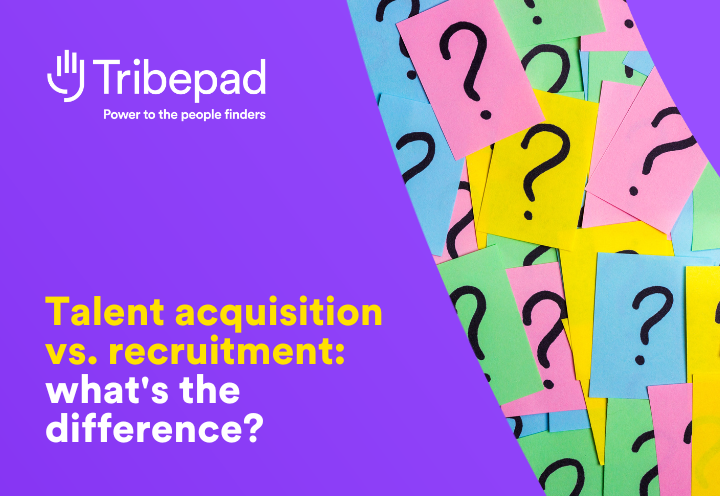A ten-step DEI checklist with small-but-mighty actions for more inclusive hiring. So even if you can’t get buy-in or budget for big changes, you can keep momentum in the right direction.
DEI is facing a moment of truth. Will your organisation bow to transatlantic pressure and roll-back DEI programmes? Or will you double-down, stand tall, and keep taking a stance for inclusive hiring?
We know what most recruiters want, at least. We spend all day working with passionate, dedicated teams who’re absolutely on-message about the importance of diversity, equity, and inclusion. Recruiters who understand that DEI is a business priority, not just a moral one.
But, of course, intention and budget are two different things. Most organisations face huge pressure right now to cut costs, and DEI is often in the firing line.
That’s exactly what our Stop the Bias 2025 report offers. If big change is off the table, small changes are your superpower. Here’s a ten-step checklist to turn intention into action, whatever your starting point.
Quick-fire 10-step checklist for inclusive hiring
#1 – Post inclusive job descriptions
Because clear, inclusive ads reduce bias from the start.
Job descriptions should be clear, detailed and unambiguous. Use inclusive language that avoids bias and discrimination, focussing on required skills and behaviours rather than surface assumptions about “the type of person” who’ll have those skills and experience.
For example:
❌ You’re a native English speaker
✅ You’re fluent in English
❌ You have a degree in computer science
✅ You’re good with Java and Python
Tribepad’s recruitment software makes this easy.
- Ad Assistant automatically scans your job ads, highlighting bias and offering suggestions to make adverts more inclusive, engaging, and effective.
- Sidekick automatically adds relevant hard and soft skills to jobs, powering fairer skills-based hiring.
#2 – Broaden advertising distribution
Because to find different people, you need to look in different places.
To attract more diverse candidates, be proactive about seeking applications from more diverse groups. Think:
- Niche job boards
- DEI-specific job boards (We love Evenbreak)
- Targeted word-of-mouth referrals from other diverse hires
- LinkedIn and community groups
If you just default-distribute to the job board behemoths, broadening your distribution is a small change that can make a big difference. (Super small, if you’re using Tribepad. Our Job Booster is designed for exactly this use case, allowing you to post jobs to lots of boards case-by-case, without a subscription).
#3 – Anonymise applications
Because personal details shouldn’t sway hiring decisions.
Reduce unconscious bias (“ooh they went to the same university as me”; “hm, they’re older than I thought would apply for this role”) by reviewing applications without personal details like names or demographics.
Tribepad’s ATS anonymises with a click, so it’s zero hassle to do things better.
#4 – Audit your screening and selection criteria
Because unspoken preferences lead to unexamined biases.
The best intentions can easily get lost when you get to screening and shortlisting, especially when many people are involved.
Managers have an intuitive but unarticulated idea of “who they’re looking for”. But unarticulated means uninterrogated, which means subjective and possibly biased.
One of the best things you can do for inclusive hiring is create specific, objective screening and shortlisting criteria. Ensure everyone’s singing from the same, thoughtful, fair song-sheet.
That’s one of the major benefits of Tribepad Sidekick. Our fully-integrated, ethical AI engine helps you screen and shortlist fairer, faster, and better – with:
-
- At-a-glance candidate scorecards
- In-depth candidate summary and SWOT analysis
- Suggested interview questions for further info
#5 – Standardise interviews
Because structure means fairness – and better comparisons.
Inconsistency is a crack where bias can creep in. Ask candidates the same pre-written questions, so you can evaluate them more fairly. Apples to apples.
The extra mile for inclusion? Share questions in advance, so candidates can prepare. This is a mindset shift, from “catching people out” to “helping them put their best foot forwards”.
#6 – Add skills-based assessments
Because potential matters more than pedigree.
The foundation of inclusive hiring is hiring for ability to do the job, rather than any of the supplementary bumf that might distract us. Stop hiring for pedigree; start hiring for potential.
Whether or not you’re banishing the CV altogether, add job-relevant candidate assessments like skills tests, work samples, or psychometric evaluation.
#7 – Move towards salary transparency
Because fair pay starts with fair information.
Low-effort change that makes a big difference for inclusion. Salary transparency:
- Shows commitment to equality
- Promotes fair renumeration
- Helps avoid unequal pay claims
- Makes negotiation easier
- Respects candidates’ time
If you’re worried your salaries aren’t amazingly competitive, take heart. Josh Bersin research shows that organisations with transparent and well-communicated pay practices see 13x more employee engagement compared to those focusing solely on competitive salaries. How you communicate about pay matters just as much as what you pay.
#8 – Give feedback to everyone
Because ghosting is unfair, disrespectful, and erodes trust.
Fair recruitment means giving clear feedback to candidates – every candidate, successful and unsuccessful – about their application. Whether they just applied, interviewed, or were hired. It’s a matter of respect. Don’t ghost.
The right recruitment tech should make giving feedback fast and simple.
Tribepad Sidekick automatically generates deep-dive AI analysis summarising candidates’ application, skills, strengths, gaps, and possible rejection reason. So you’ve got the arsenal to move forwards quickly – or give meaningful feedback about why you’re not proceeding this time.
#9 – Harness DEI analytics to keep growing
Because what gets measured gets improved.
Good recruitment teams don’t just set-and-forget their processes. They check, refine, and grow. Treat DEI like any other important initiative:
- Set diversity targets
- Track key metrics
- Identify patterns
- Check for bias
- Keep refining
The right recruitment software should help you understand exactly how diverse candidates move through your process. So you can spot and unblock sticking points and move closer to inclusion and equity.
#10 – Embed DEI into your workplace too
Because inclusion doesn’t stop at the job offer.
There’s little point building inclusive recruitment practices unless your culture is also inclusive. Or else you’ll attract diverse hires only to lose them to churn.
Liaise with HR to ensure there’s authenticity and consistency between recruitment and workplace culture. Some real-world strategies – courtesy of West Northamptonshire Council (WNC), who’ve effectively put DEI at the heart of their people strategy:
- Concrete three-year diversity strategy
- Thriving diverse staff networks
- ‘Reverse mentoring’ scheme
- Elevate’ programme to address barriers to progression
Keep walking the talk
Inclusive hiring isn’t (just) about policy. It’s a thousand small decisions that reinforce bias or chip away at it. This checklist gives you ten of those small-but-mighty steps: practical actions that help move you from intention to impact, even when the tide’s against you.
But here’s the truth: you can’t keep walking the talk without the right tools.
Inclusive hiring is hard enough when resources are tight and buy-in is lukewarm. Trying to do it with clunky, outdated systems? That’s guaranteed to stall progress, even when your heart’s in the right place.
That’s where your recruitment tech stack matters. The right platform should actively champion inclusive hiring – making it easier to remove bias, streamline fairer processes, and measure progress along the way. (And yes, that’s exactly what we built Tribepad to do.)
If you’re ready to walk the talk, our Stop the Bias 2025 report is your blueprint. And Tribepad is your partner. Let’s hire fairer, faster, better. Together.
Tribepad is the trusted tech ally to smart(er) recruiters everywhere. Combining ATS, CRM, Video Interviewing, and Onboarding, our talent acquisition software is a springboard for fairer, faster, better recruitment for everyone.
Trusted by organisations like the Tesco, NHS Professionals, and Subway, 30-million people in 16 languages use Tribepad.




